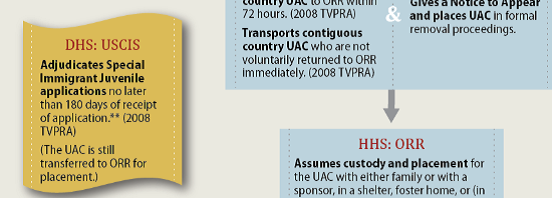Barack Obama is not going to either slow or stop the air traffic from at least three countries in a Dante’s Inferno of the epidemic Ebola outbreak. So a sensible plan would be for control of people and passengers leaving African nations affected by Ebola to be done so only on chartered aircraft medically designed to assess signs of illness with experts from the Center for Disease Control as part of the medical crew on board. Then all passengers with any type of indications we transported to a single isolation facility in the United States where again Center for Disease Control personnel and virus experts are in control rather than spreading patients around the United States terrifying the country.
Now, the genesis of the Ebola outbreak, there are two articles of due importance for consideration and understanding.
Professor Peter Piot, who discovered the Ebola virus in 1976, conducted an extensive interview with the London newspaper, The Guardian, over the weekend whereby he discussed his initial discovery of the virus; and, what may lie ahead. The Guardians’ Rafela von Bredow, and Veronika Hackenbroch write that Professor Piot “still remembers that day in September 1976, when a pilot from Sabena Airlines brought us a shinny blue Thermos; and, a letter from a doctor in Kinshasa — in what was then Zaire.” At the time, Professor Piot was a researcher at a lab in Antwerp, Belgium. The letter stated that the blood sample contained in the Thermos came from a Belgian nun who had recently fallen ill from a mysterious illness in Yambuku. a remote village in the northern part of the country. The doctor who sent the sample, asked Professor Piot’s lab to test the sample for yellow fever.”

When asked by the two Guardian reporters how he protected himself back then from such a dangerous pathogen?, Professor Piot said “we had no idea how dangerous the virus was; and, there were no high-security labs in Belgium.” Tests for yellow and Lassa fever, as well as typhoid were all negative. What then, could it be?” Professor Piot said they all asked themselves. In order to get at least some idea of what they might be dealing with, Professor Piot and his lab colleagues decided to inject some of the blood sample into mice and other lab animals. At first, nothing happened,” Professor Piot said, and the researchers “thought that perhaps the pathogen had been damaged from insufficient refrigeration in the Thermos. But then, one animal after the next began to die. We began to realize the sample contained something very deadly.”
As they began to analyze additional samples that had just been received; the World Health Organization (WHO) “instructed us to send all of our samples to a high-security lab in England.” But, says Professor Piot, his boss at the time “wanted to bring our work to a conclusion, no matter what.” “He grabbed a vial containing the virus to examine it, but his hand was shaking and he dropped it on a colleagues foot. The vial shattered, My only thought was: “Oh shit!” “We immediately disinfected everything; and luckily, our colleague was wearing thick leather shoes. Nothing happened to any of us.”
Eventually, The Guardian reports, Professor Piot and his colleagues were able to create an image of the virus using an electron microscope. “What the hell is that?” they asked themselves. “The virus we had been searching for was very big, very long, and worm-like. It had no similarities with yellow fever. Rather, it looked like an extremely dangerous Marburg virus which, like Ebola, causes hemorrhagic fever. In the 1960s, the virus killed several laboratory workers in Marburg, Germany.”
Soon after it was confirmed that this was a new, previously unknown virus, Professor Piot “became one of the first scientists to fly to Zaire,” The Guardian noted. Although thrilled at being one of the first doctors to be tracking down and studying this new, deadly virus, there was genuine fear among these scientists as “we had no idea that it was transmitted by bodily fluids.”
When deciding what to name the new virus, Professor Piot and his colleagues “definitely didn’t want to name the new pathogen “Yambuku Virus,” since that name would stigmatize the place of origin forever. “There was a map hanging on the wall; and, our American team leader suggested looking for the nearest river — ultimately giving the virus its name. It was the Ebola River. But, the map on the wall was small and inexact. We only learned later that the nearest river was actually a different one; but, Ebola is a nice name isn’t it?” Professor Piot said, and the name stuck.”
Professor Piot and his colleagues eventually discovered that the infected Belgian nuns had also unwittingly spread the new virus called Ebola. “In their hospital, they regularly gave pregnant women vitamin injections using unsterilized needles. By doing so, they infected many young women in Yambuku with the virus.” “Clinics that failed to observe [proper hygiene] this and other rules of hygiene functioned as catalysts in all additional Ebola outbreaks.” Their mistakes, “drastically sped up the spread of the virus, or made the spread possible in the first place. Even in the current Ebola outbreak in West Africa, hospitals unfortunately played this ignominious role in the beginning,” the Guardian journalists noted; and, no doubt feed the suspicion and distrust of the medical profession in these remote places in the world — a suspicion that probably still lingers today.

The Guardian journalist’s postulated that “there is actually a well-established procedure for curtailing Ebola outbreaks: isolating those infected and closely monitoring those who had contact with them. How could such a catastrophe as the one we’re seeing now — ever happen?” Professor Piot responded that “I think it is what people call a Perfect Storm: when every individual circumstance is a bit worse than normal; and, they combine to create a disaster. And with this outbreak, there were many factors that were disadvantageous from the very beginning. Some of the countries involved were just emerging from terrible civil wars, many of their doctors had fled, and their healthcare system [such as it was] had collapsed. In all of Liberia for example,” Professor Piot said, there were only 51 doctors in 2010, and many of them since then — have died of Ebola.” “The fact that the outbreak began in the densely populated border region between Guinea, Sierra Leone, and Liberia…also contributed to the catastrophe,” Professor Piot added.
“For the first time in its history, the virus also reached metropolises such as Monrovia and Freetown. Is that the worst that can happen?” The Guardian journalists asked Professor Piot. “In large cities — particularly in chaotic slums — it is virtually impossible to find those who had contact with patients, no matter how great the effort. That is why I am so worried about Nigeria as well. The country is home to mega-cities like Lagos and Port Harcourt; and, if the Ebola virus lodges there…and begins to spread….it would be an unimaginable catastrophe,” Professor Piot warned.
When asked “if we’ve lost complete control of the epidemic?,” Professor Piot responded that “I have always been an optimist; and, I think we have no other choice than to try everything, really everything. It’s good the United States and some other countries are finally beginning to help. But, Germany, or even Belgium, for example, must do a lot more. And, it should be clear to all of us: This isn’t just an epidemic any more. This is a humanitarian catastrophe. We don’t just need care personnel, but also logistics experts, trucks, jeeps, and foodstuffs. Such an epidemic can destabilize entire regions. I can only hope that we will be able to get it under control. I never really thought that it could get this bad.” Professor Piot said.
When asked if he thought “we might be facing the beginnings of a pandemic?” Professor Piot said, “there will certainly be Ebola patients from West Africa who will come to us in the hopes of receiving treatment. But, an outbreak in Europe or North America would quickly be brought under control. I am more worried about the many people from India who work in trade or industry in West Africa. It would only take one of them to become infected; and, travel to India to visit relatives during the virus’s incubation period, and once he/she becomes sick, go to a public hospital there. Doctors and nurses in India, too often, don’t wear protective gloves. They would immediately become infected and spread the virus.”
The Guardian journalists postulated that the “virus is constantly changing its genetic makeup; and, the more people who become infected, the greater [the] chance the virus will mutate.,” to a more virulent and transmissible form — “which might speed its spread.” Professor Piot said, “yes, that really is the apocalyptic scenario. Humans are actually just an accidental host for the virus, and not a good one. From the perspective of a virus, it isn’t desirable for its host, within which the pathogen hopes to multiply, to die so quickly. It would be much better for the virus to allow us to stay alive longer.”
When asked “if the virus could suddenly change itself…so, it could spread via the air/respiratory route?,” Professor Piot responded that “luckily, that is extremely unlikely. But, a mutation that would allow Ebola patients to live a couple of weeks longer is certainly possible; and, would be disadvantageous for the virus. But, that would allow Ebola patients to infect many more people than is currently the case.” “But that is speculation isn’t it?” The Guardian journalists asked. “Certainly,” Professor Piot responded. “But, it is just one of many possible ways the virus could change to spread more easily. And, it is clear that this virus is mutating.”
When asked about his views with respect to experimental drugs, Professor Piot said “patients could probably be treated more quickly with blood serum from Ebola survivors, even if that would likely be extremely difficult — given the chaotic local conditions. We need to find out now, if these methods, or if experimental drugs like ZMapp, really help. For most people, they will come [experimental drugs] too late in this epidemic. But, if they help, they should be made available for the next outbreak.”
In concluding the interview, The Guardian journalists observed that “in Zaire, during the first outbreak, a hospital with poor hygiene was responsible for spreading the illness. Today, almost the same thing is happening. Was Louis Pasteur right when he said: “It is the microbes who will have the last word?” Professor Piot said, “Of course we are a long way from declaring victory over bacteria and viruses. HIV is still here; in London alone, five gaymen become infected daily. An increasing number of bacteria are becoming resistant to antibiotics. And, I can still see Ebola patients in Yambuku, how they died in their shacks; and, we couldn’t do anything except let them die. In principal, it’s still the same today. That is very depressing. But, it also provides me with a strong motivation to do something. I love life. That is why I am doing everything I can to convince the powerful in this world to finally send sufficient help to West Africa. Now! Enough said.

While this is long, please continue reading to understand the scope and reason of the Ebola threats. Now let us move on to the World Health Organization (WHO) and why that is yet another very big problem.
World Health Organization is absent:
More information with links but not all vetted with regard to Ebola possibilities:
http://www.eddiefleming.com/2014/10/was-ebola-designed-as-bioterrorism-weapon-and-is-already-airborne/
How Ebola is spreading:
http://newsok.com/how-the-world-let-ebola-spread/article/feed/743729



